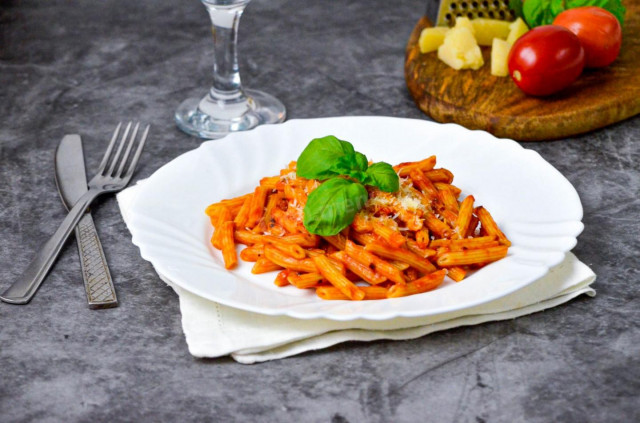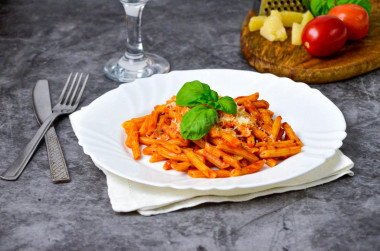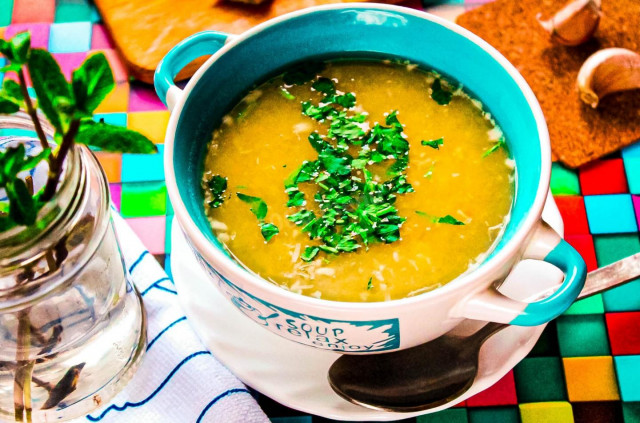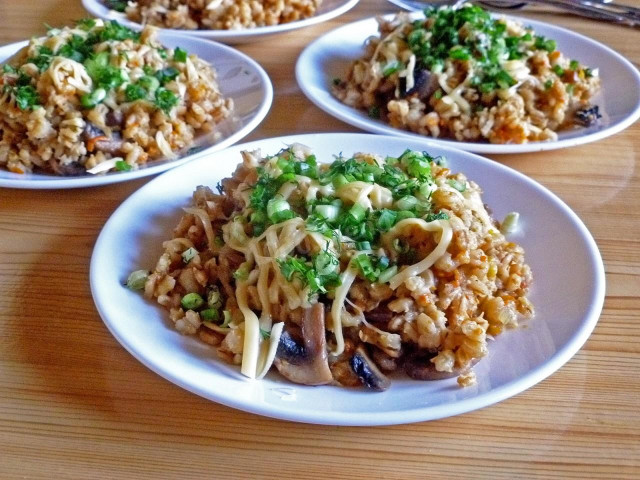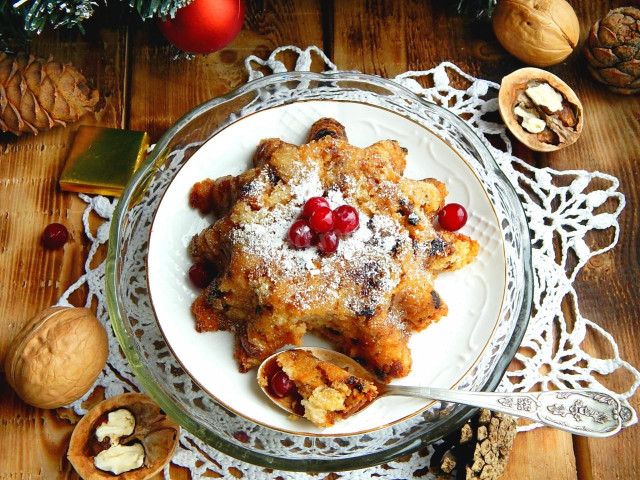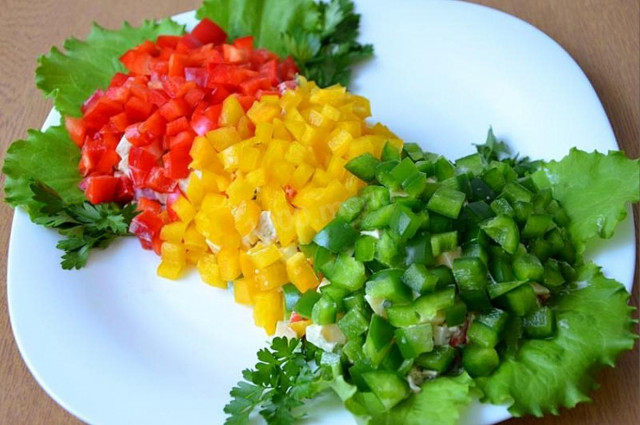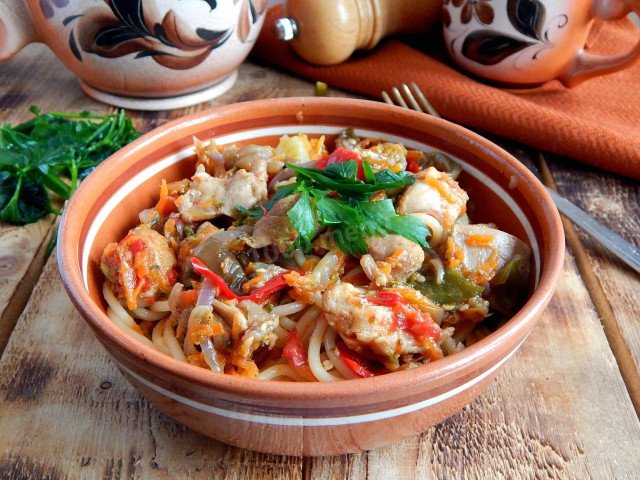Composition / ingredients
Step-by-step cooking
Step 1:
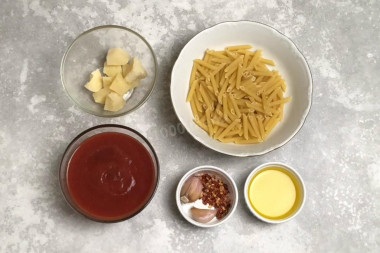
How to make Penne Arabiata pasta? Prepare the products. I took chili pepper as a seasoning. The pasta sauce is prepared very quickly, so immediately before cooking, put a pan of water on the fire. There should be a lot of water, at the rate of 1 liter of water for every 100 grams of paste.
Step 2:

Peel the garlic and cut into thin slices. If you use chili peppers in pods, then cut it into rings. Whether to leave the seeds or not is a matter of taste, it will be much sharper with them.
Step 3:
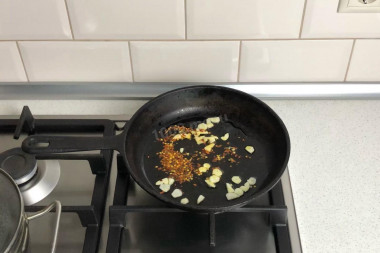
Heat olive oil in a frying pan, add garlic and pepper. Fry them over low heat, stirring, for a few minutes. Garlic should be gilded.
Step 4:
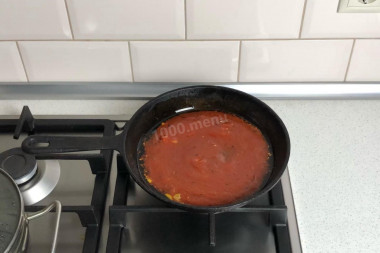
Add tomatoes to the pan. I have this crushed tomato pulp. You can also use fresh tomatoes, having previously peeled them from the skin and finely chopped. Add salt to taste. Stir and leave the sauce to cook over low heat for 5-10 minutes until thickened.
Step 5:

The water will boil in the meantime. Add salt, toss the pasta. Cook them according to the instructions on the pack. It is better to reduce the cooking time by a minute so that the pasta remains slightly firm, as the Italians say, al dente — by the tooth.
Step 6:
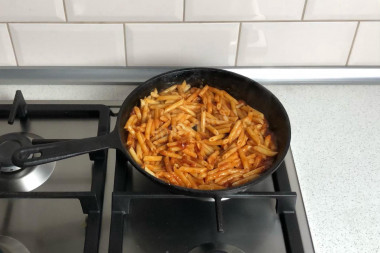
Flip the finished pasta into a colander, and then immediately put it in the sauce in a frying pan. Stir and let it simmer for a couple of minutes. Then serve the pasta to the table, spread on plates and sprinkle with grated cheese. Enjoy your meal!
The sauce really turned out to be very spicy. If you are a fan of chili, then I strongly advise you! The sharpness can be varied by its quantity. If you take a fresh pepper, then by removing the seeds from it, you can reduce the fireiness of the dish. I took dry chili, which consists mainly of its seeds, and it was very hot for us!
Canned tomatoes are great as a tomato base — mashed or in pieces, they are now sold everywhere, they contain only pulp, without salt and other preservatives. But you can also take tomatoes in their own juice, then just don't salt the sauce. And mash them right in the pan with a fork.
The sauce is also made from fresh tomatoes. To do this, they need to be peeled off. Cut the tomato crosswise and put it in boiling water for a minute, the skin will come off very easily. Then it will only be necessary to cut the pulp.
How to cook pasta properly, how to cook pasta al dente, how to choose a quality product to avoid disappointment and much more read in the article "Pasta and pasta - the subtleties of choice and secrets of cooking" .
Since the degree of salinity, sweetness, bitterness, sharpness, acid, burning is individual for everyone, always add spices, spices and seasonings, focusing on your taste! If you put some of the seasonings for the first time, then keep in mind that there are spices that it is especially important not to shift (for example, chili pepper).
How to choose the perfect pot for soup, porridge or pickling cucumbers read the article about pots.
Caloric content of the products possible in the composition of the dish
- Dutch cheese - 352 kcal/100g
- Swiss cheese - 335 kcal/100g
- Russian cheese - 366 kcal/100g
- Kostroma cheese - 345 kcal/100g
- Yaroslavsky cheese - 361 kcal/100g
- Altai cheese 50% fat content - 356 kcal/100g
- Soviet cheese - 400 kcal/100g
- Cheese "steppe" - 362 kcal/100g
- Uglich cheese - 347 kcal/100g
- Poshekhonsky cheese - 350 kcal/100g
- Lambert cheese - 377 kcal/100g
- Appnzeller cheese with 50% fat content - 400 kcal/100g
- Chester cheese with 50% fat content - 363 kcal/100g
- Edamer cheese with 40% fat content - 340 kcal/100g
- Cheese with mushrooms of 50% fat content - 395 kcal/100g
- Emmental cheese with 45% fat content - 420 kcal/100g
- Gouda cheese with 45% fat content - 356 kcal/100g
- Aiadeus cheese - 364 kcal/100g
- Dom blanc cheese (semi-hard) - 360 kcal/100g
- Cheese "lo spalmino" - 61 kcal/100g
- Cheese "etorki" (sheep, hard) - 401 kcal/100g
- White cheese - 100 kcal/100g
- Fat yellow cheese - 260 kcal/100g
- Altai cheese - 355 kcal/100g
- Kaunas cheese - 355 kcal/100g
- Latvian cheese - 316 kcal/100g
- Limburger cheese - 327 kcal/100g
- Lithuanian cheese - 250 kcal/100g
- Lake cheese - 350 kcal/100g
- Gruyere cheese - 396 kcal/100g
- Garlic - 143 kcal/100g
- Salt - 0 kcal/100g
- Olive oil - 913 kcal/100g
- Chili pepper - 40 kcal/100g
- Hot tomato sauce - 99 kcal/100g
- Penne - 330 kcal/100g

